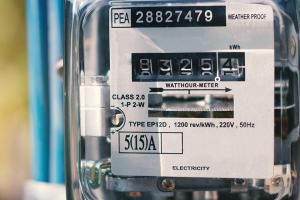Mastering Your Electric Bill: The Ultimate Guide to Interpreting Your Residential Electrical Meter

-
Quick Links:
- Introduction
- Understanding Electric Meters
- Types of Electric Meters
- How to Read Your Electrical Meter
- Calculating Your Energy Usage
- Smart Meters vs. Analog Meters
- Case Studies and Examples
- Energy-Saving Tips
- Conclusion
- FAQs
Introduction
Understanding your residential electrical meter is crucial for managing your energy consumption and reducing your electric bill. This comprehensive guide will equip you with the knowledge needed to interpret your electric meter accurately, understand your energy usage patterns, and implement effective strategies for saving on electricity costs.
Understanding Electric Meters
Electric meters are devices that measure the amount of electrical energy consumed by a residence. They are typically installed by utility companies and come in various types, each with different mechanisms for recording energy usage.
How Electric Meters Work
Electric meters work by tracking the flow of electrical energy in kilowatt-hours (kWh). Every time you use electricity, the meter records the amount consumed, which is then reflected in your monthly bill.
Types of Electric Meters
- Analog Meters: These traditional meters feature a series of dials that rotate to indicate energy consumption.
- Digital Meters: These meters display energy usage on a digital screen, making them easier to read than analog meters.
- Smart Meters: Advanced digital meters that provide real-time data on energy consumption and can communicate with the utility company for more accurate billing.
How to Read Your Electrical Meter
Reading your electric meter is a straightforward process. Here’s a step-by-step guide:
- Locate your meter: It is usually found outside your home, attached to the side of the house.
- Identify the type of meter: Determine if it is an analog, digital, or smart meter.
- Reading an Analog Meter: Read the dials from left to right. Record the numbers indicated by the pointers on each dial.
- Reading a Digital Meter: Simply note the numbers displayed on the screen.
- Smart Meters: Access your utility provider's app to view real-time usage data.
Calculating Your Energy Usage
Once you have your meter reading, you can calculate your energy usage:
- Take the current reading and subtract the previous reading (found on your last bill).
- Multiply the difference by the rate charged by your utility company to find your total cost.
Smart Meters vs. Analog Meters
Smart meters provide several advantages over traditional analog meters:
- Real-time data access
- Remote reading capabilities
- Detailed usage reports
These features enable homeowners to make informed decisions about their energy consumption.
Case Studies and Examples
Case Study 1: A Family's Journey to Reduce Energy Costs
The Smith family implemented a smart meter in their home and accessed real-time data. They discovered that their peak energy usage occurred during late afternoons. By adjusting their usage patterns, they reduced their monthly bill by 15%.
Case Study 2: Understanding Seasonal Variations
During the winter months, the Johnsons noted a significant increase in their energy bills. By analyzing their meter readings, they identified that heating their home was the main contributor. They invested in insulation, which led to a 20% decrease in energy costs in subsequent winters.
Energy-Saving Tips
To maximize savings on your electric bill, consider the following tips:
- Use energy-efficient appliances.
- Unplug devices when not in use.
- Implement smart home technology for better energy management.
- Seal windows and doors to prevent drafts.
Conclusion
Interpreting your residential electrical meter is an essential skill for any homeowner. By understanding how to read your meter, calculate your energy usage, and implement energy-saving strategies, you can take control of your energy consumption and reduce your electric bills.
FAQs
1. How often should I read my electric meter?
It’s advisable to read your meter monthly to track your energy usage accurately.
2. What do the different dials on an analog meter represent?
Each dial represents a different digit in the total kilowatt-hour reading, typically from left to right.
3. How can I find out my electricity rate?
Check your utility bill or visit your utility company's website for rates.
4. What should I do if my electric meter is malfunctioning?
Contact your utility provider immediately for assistance and possible replacement.
5. Can I install a smart meter myself?
Installation of smart meters should be done by a qualified professional to ensure safety and compliance with regulations.
6. How can I reduce my energy consumption in the summer?
Consider using fans, setting your thermostat higher, and blocking direct sunlight with shades or curtains.
7. What is the average lifespan of an electric meter?
Most electric meters last between 10 to 30 years, depending on the type and usage.
8. How do I report a power outage?
Contact your utility provider directly through their customer service line.
9. What is peak and off-peak energy usage?
Peak usage refers to times when energy demand is highest, while off-peak hours are typically when demand is lower, often resulting in lower rates.
10. Can energy-efficient appliances really save me money?
Yes, energy-efficient appliances consume less electricity, which can significantly reduce your monthly bills.
Random Reads
- Prevent easy install vmware workstation
- Powerpoint transitions
- How to turn off satellite view google maps iphone ipad
- How to measure remaining propane
- How to merge multiple text files
- Resetting a vizio remote
- Reset ipad without password
- Mastering life360
- Mastering light timers guide
- Mastering yahoo account settings